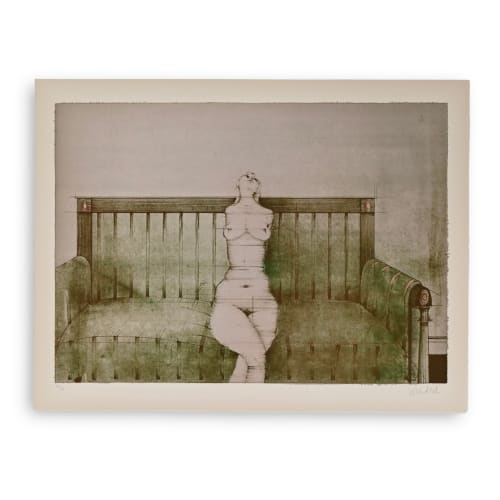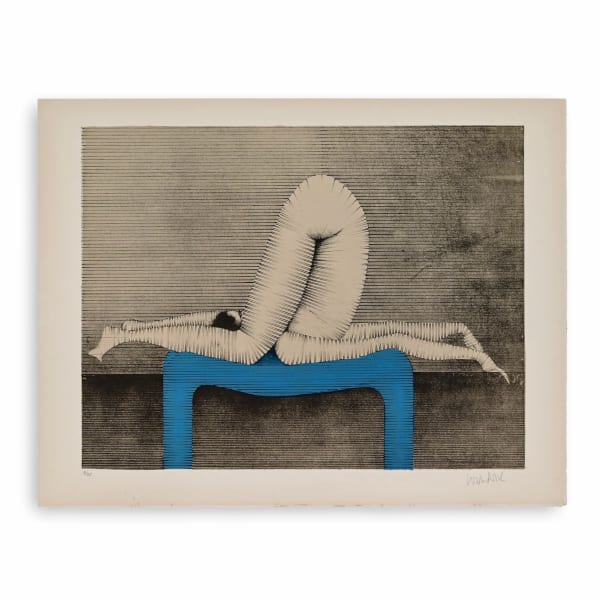Paul Wunderlich was born in Eberswalde, Germany, just outside of Berlin, and spent time as a prisoner of war before attending art school in Hamburg in 1947. After graduating, he began teaching lithography and etching while also printing for prominent artists Emil Molde and Oskar Kokoschka. He subsequently received a German cultural scholarship, which supported him over the following years as he began developing his trademark figurative style. This style included morbid and discrepant depictions of body parts, incorporating motifs from European mythology.
This style would establish Wunderlich as the most prominent and defining member of the Fantastic Realist movement. He was later influenced by the Art Deco and Art Nouveau movements, incorporating their modernist decorative elements into his figurative work. But despite these mainstream elements, their underlying provocative subject matter led German police to raid Wunderlich's studio, seizing the artist's paintings and prints. This incident prompted Wunderlich to move to Paris, but he returned to Hamburg soon afterward, where, inspired by Salvador Dalí, he began creating many bronze sculptures in the surrealist style.
During this time, Wunderlich married photojournalist Karin Székessy, whose nude photographs inspired many of his erotic, surrealist portrayals of women. He further developed a distinct and recognizable aesthetic that he maintained throughout his career, producing a vast body of work across various mediums. His works are currently part of the collections of the Museum of Modern Art in New York, the Victoria and Albert Museum in London, the Bibliotheque Nationale in Paris, the British Museum in London, and the Hirschhorn Museum in Washington, DC.



